Justine Kurland
Justine Kurland was born in 1969 and is an American fine art photographer, based in New York City. She first gained public notice with her work in the group show, called Another Girl, Another Planet (1999), at New York’s Van Doren Waxter gallery. The show included her large c-print staged tableaux pictures of landscapes inhabited by young adolescent girls, half-sprites, half juvenile delinquents. This was her first exhibition of a photographic interest that lasted from 1997, when she began taking pictures of her mentor Laurie Simmons’s babysitter and her friends, to 2002. Altogether, Kurland published 69 pictures of girls in a series called “Girl Pictures.” The staged photos take place in urban and wilderness settings, with girls depicted as though to imply they are runaways, hopeful and independent. As landscapes she chose the ‘secret places’ of late childhood; wasteland on the edges of suburbia, ‘owned’ only by a feral nature and unsupervised children. Her book Spirit West (2000) featured similar work on a more ambitious scale. In early 2001 Kurland spent several months in New Zealand, where she created similar work with school girls there.
About ‘Girl Pictures’
‘The girls were rebelling. The girls were acting out. The girls had run away from home, that much was clear. They were trying on a version of themselves that the world has thus far shown them was boy.’ Floating a raft down the Mississippi. Tucking smokes into the sleeve of a T-shirt. Having a rumble. Living off land. Cowboys, sailors, pirates, hitchhikers, hobos, train hoppers, explorers, catchers in the rye, lords of the flies- you name it, all the dominion of boys. If you wanted a place in the narrative, you had to imagine yourself inside of it. – Justine Kurland.
This is the first paragraph in Justine Kurland’s book, where she sets the narrative of her ‘Girl Pictures’ for the viewers. The narrative of this story is that these girls have ran away from home, so that they can explore and have fun and be whoever they wish to be. She sets this narrative in these tableaux images, by having the girls pose doing all these different activities, such as swimming in rivers, or camping in forests.
She also explains what she wants the viewers to take in from this book and from her images, which is that you too can be anything you dream of in your imagination. She states that they are pirates, cowboys etc, because in ‘Girl Pictures’ these girls aren’t just girls, they are whoever they want to be, as they are finding their true identity during their youth. She also states that they are trying on ‘boy,’ because in society standards it is more socially acceptable for boys to act in this rambunctious manor, rather than girls. This is due to gender stereotypes, which have been seen through many centuries. I feel like in this book ‘Girl Pictures’ she is trying to fight against these stereotypes of young girls, and this is an important matter to her and all other girls, because they have grown up being told what they should be or how they should behave a certain way due to their gender. She is fighting against these stereotypes, by having these young girls act in a way that is seen as more masculine and not socially acceptable for these girls.
Kurland also began dating women shortly after completing her ‘Girls’ series, working with an undercurrent of sex and female sexuality. As of 2018 she had been dating her current female partner for three years. I think that, because of her work fighting against stereotypes and researching identity, it has impacted her and also allowed her to fight stereotypes and socials norms in her own personal life and help her find her true identity.
‘Girl Pictures’ is also about finding your identity and exploring youth as ‘girls’, because during youth you do not know who you fully are yet and being able to explore every aspect of your youth, even if it does not comply with social ‘norms’ allows you get the truest sense of your identity possible. Justine Kurland presents the girls finding their identity throughout the the book, because she states and presents, ‘Cowboys, sailors, pirates, hitchhikers, hobos, train hoppers, explorers, catchers in the rye, lords of the flies- you name it, all the dominion of boys. If you wanted a place in the narrative, you had to imagine yourself inside of it.’ This quote states that the girls could be anything they wanted to be even if it was the boys ‘dominion.’
Importance of the Topic
This topic of girlhood is really important to me and all other girls, because it explores our identity and youth. The way Justine Kurland opposed social norms in this book is important for girls all over the world, especially young girls that are exploring their identity, because this may influence people to decide their own identity, instead of following social standards.
Justine Kurland also explores opposing female stereotypes, which is really important to women and girls all around the world, because this will allow and influence other women and girls to oppose these stereotypes as well, so that they can be anything they want to be, instead of just confined to a certain range of lifestyles and careers.
The importance of this topic for me during my personal study, is that I can relate to Justine Kurland’s work, as well as adding my own experience, as I have experienced girlhood and youth. This will allow to me explore my youth and see how my identity has changed through the course of my life. I really want to explore this, so that I can figure out my own identity.
Girl Pictures

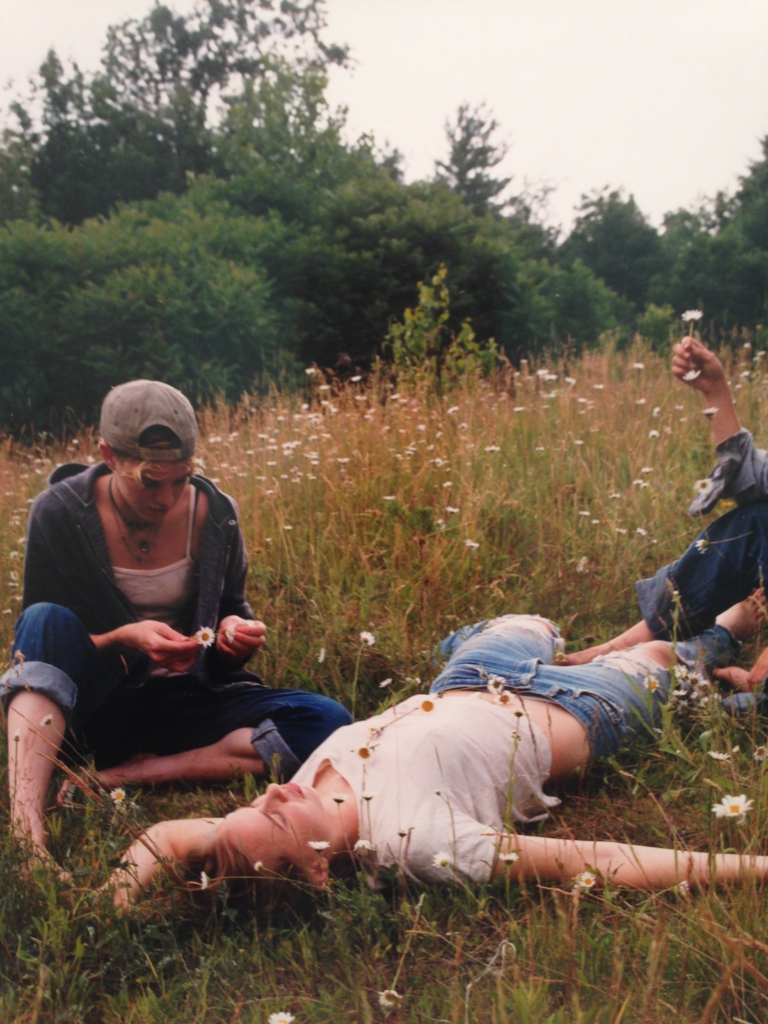
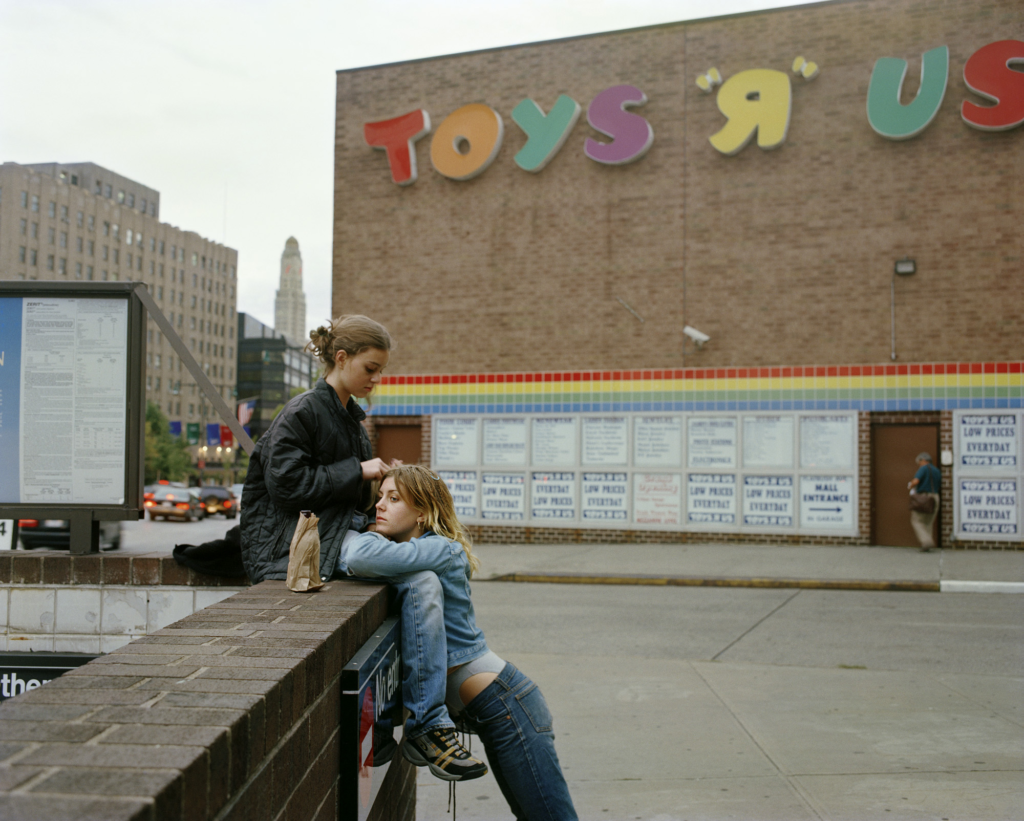
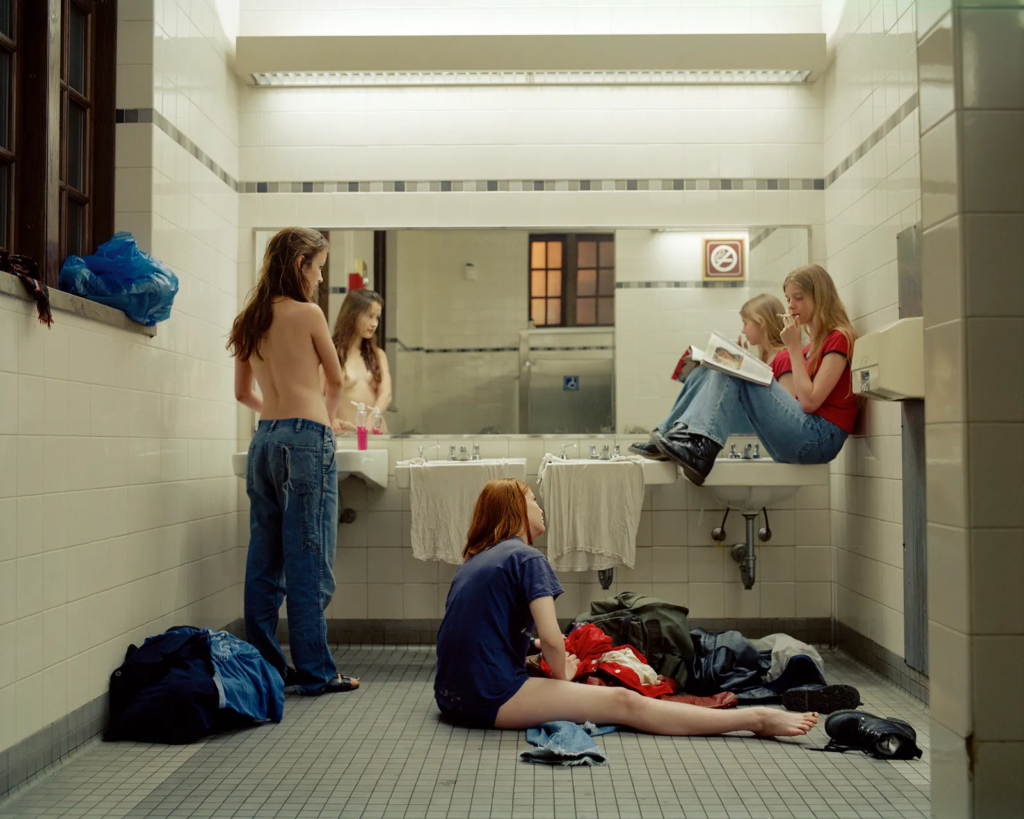
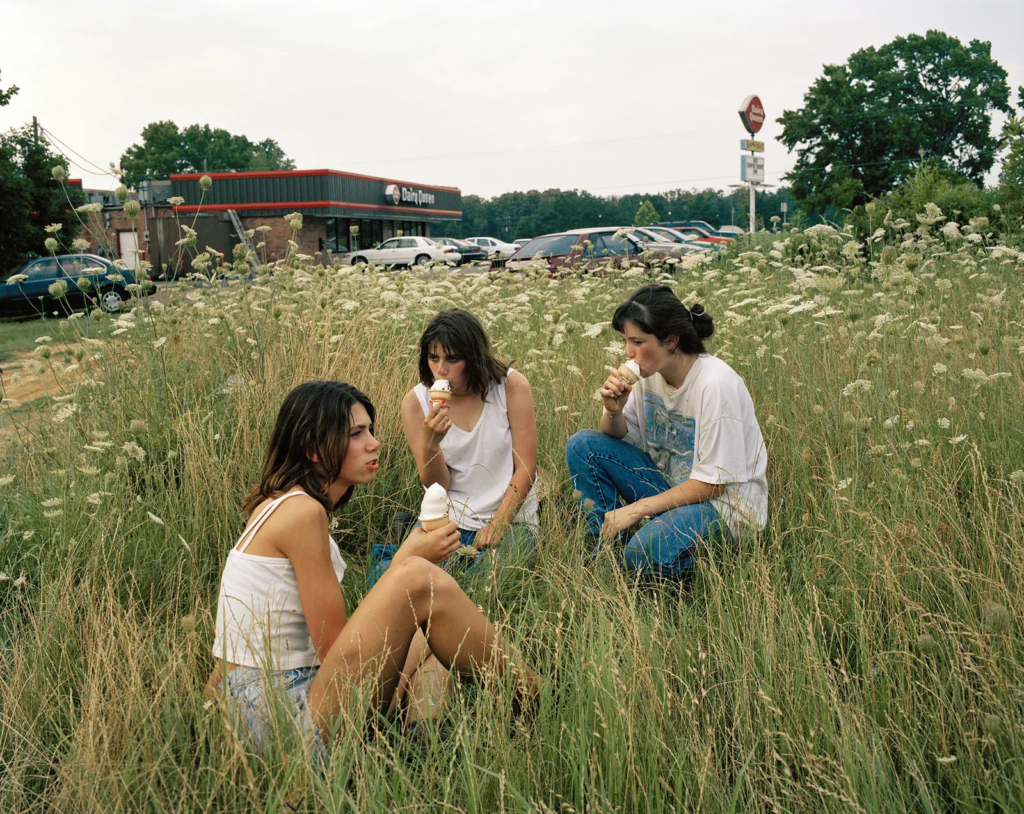
Composition
Justine Kurland carefully composes all her tableaux images, as she manipulated the narrative to be whatever she desires. She manipulates the position and distance of the girls and herself, to create a good composition.
Justine Kurland borrowed ideas, concepts and compositions from old historical paintings (masters/ famous paintings). An example of her borrowing from a master is ‘Le Dejeuner sur l’herbe’ by Edouard Manet, which was created in 1862-63.

This painting includes a nude women in the foreground of the painting, who is lunching with two fully dressed men, who are in the middle ground of the painting. They also seem to be having a picnic in a woods, which is presented by the setting of the painting and the picnic basket containing fruit. This suggests they are lunching, as the title of the painting states. ‘Le Dejeuner sur l’herbe’ is French and states ‘Lunch on the grass.’ There is also a half dressed women in the background of this painting, who is washing herself/ swimming in the lake. This painting was very scandalous back in the 1800s, as public nudity was seen as vulgar and frowned upon by society. This was because nudity was a very private concept back in that time, so the models for this painting would have most likely been prostitutes, as a respectable women would not have done this, or been allowed to in this time period.
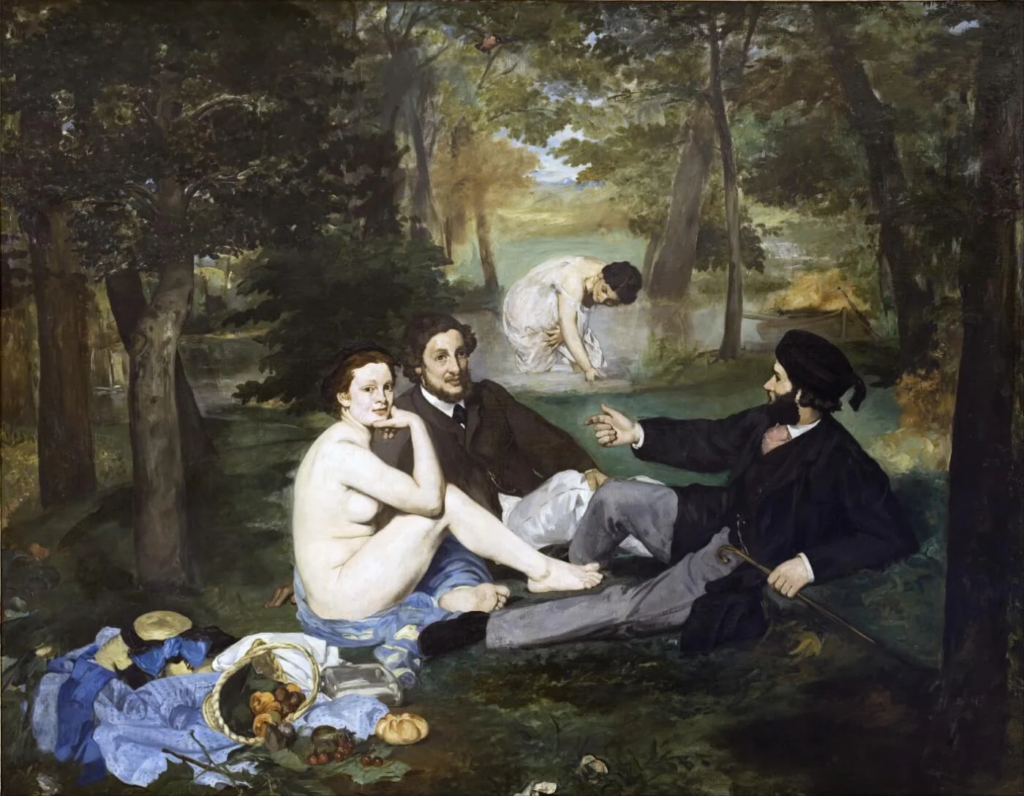
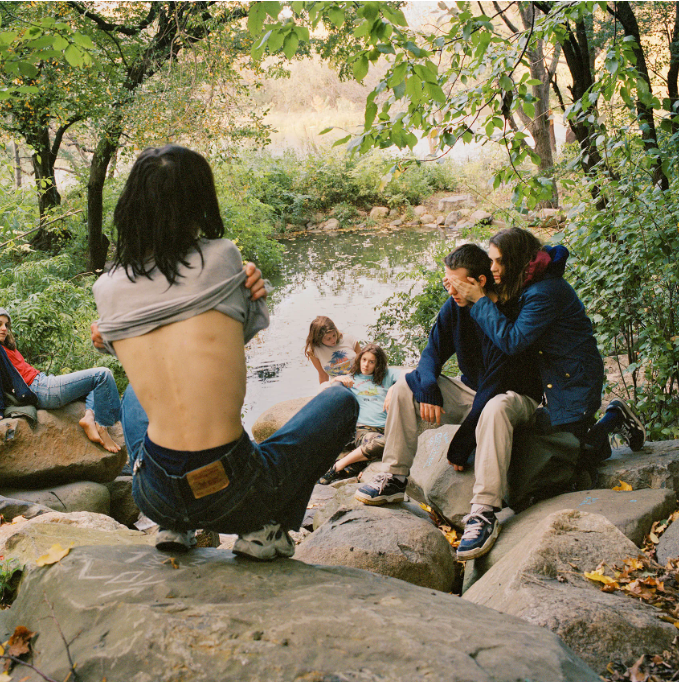
Justine Kurland borrowed the concept and the composition from this famous painting. As seen in the painting and the photograph, the settings are quite similar, as they are both scenic landscapes, which are wooded, with trees in the distance, as well as the lake in the background. She has also borrowed the nudity concept from the painting, as she has a young girl lifting her top in the photograph, as if she is undressing to get in the lake. She has also borrowed the composition from the this photo, as well as other visual elements. Justine Kurland has used the same layout of having the ‘nude’ girl in the foreground, with people in the middle ground, as well as more people in the background down near the lake.
Analysis of one image

The lighting used in this image is artificial lighting, because the image is taken inside. The image also has a high level of control, because it is a staged tableaux image, where the girls position, distance and location was manipulated the way Justine Kurland thought best fitted. This image is a colour image and has quite warm tones throughout out, because of the warmness of the light (not a harsh florescent light). The layout of these girls was manipulated, so that there was a foreground, middle ground, and background, which leads the viewers eye around the page from front to back. This make the girls the main viewpoint of this image.
This photograph displays ‘run away’ girls living out of public restrooms, as they are exploring their sexuality and ‘trying on boy.’ This photo is largely about fighting against stereotypes, as they are acting in a way that is seen as more masculine. These images are also about exploring identity, because in these images the girls can be anything they want and desire, from princesses to cowboys and more.
What I am taking Inspiration from
I am taking inspiration from the way Justine Kurland takes her images. She takes tableaux staged images, that look like candid shots, which is what I am going to replicate for my own personal study. She also takes pictures of young girls doing a range of activities, ranging from camping to shooting. I am also going to be taking pictures of a group of young girls (my friends) doing a range of similar activities, but I am also going to include a few different activities that are feminine according to society, because Justine Kurland only explored the girls ‘trying on boy,‘ so she only explored opposing female stereotypes. In my study I am also going to explore opposing female stereotypes, but I am also going to present female stereotypes, so I can present a larger range of identity in my study. Justine Kurland also has a distinctive outdoor settings in her images, including places such as the woods, rivers or roads, which I am also going to use for the setting of my images. However, I may take a few images inside, as a few of my youth memories were inside and I also want to explore these.
I also want to take inspiration from her carefully thought out compositions, that she took inspiration from old historical paintings. Not only do I want to replicate some of her compositions, as well as creating my own compositions to suit the setting an activities that are being done. I may also try and take inspiration from old famous historical paintings, just like she has, so that I can really stretch myself further and challenge myself. Some ideas of masters that I could recreate the composition of are below:
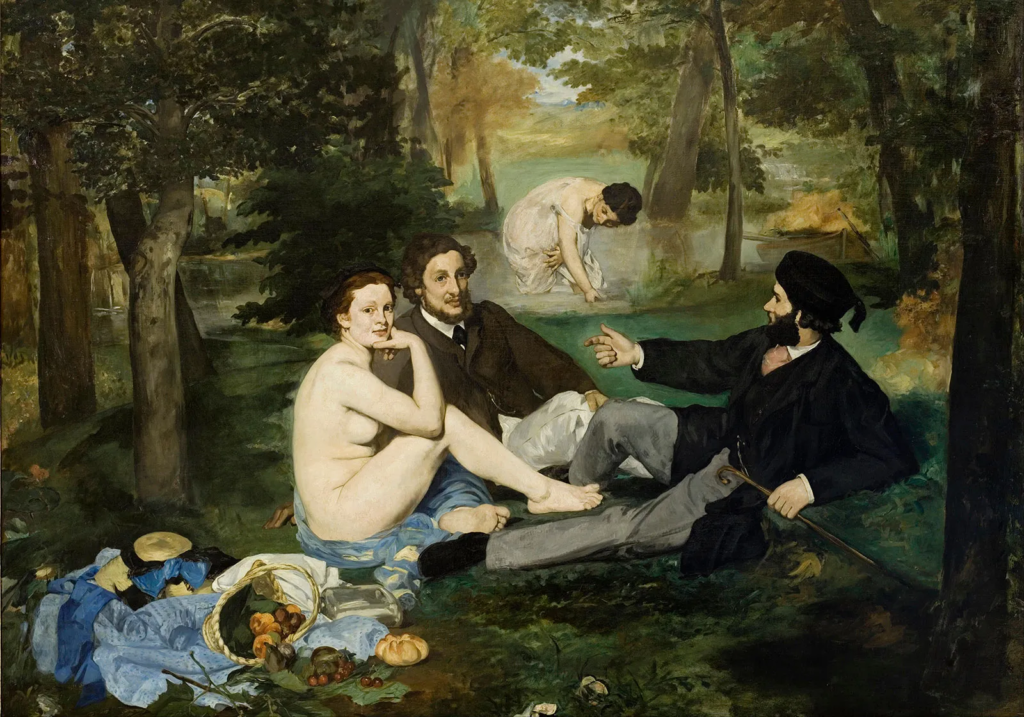
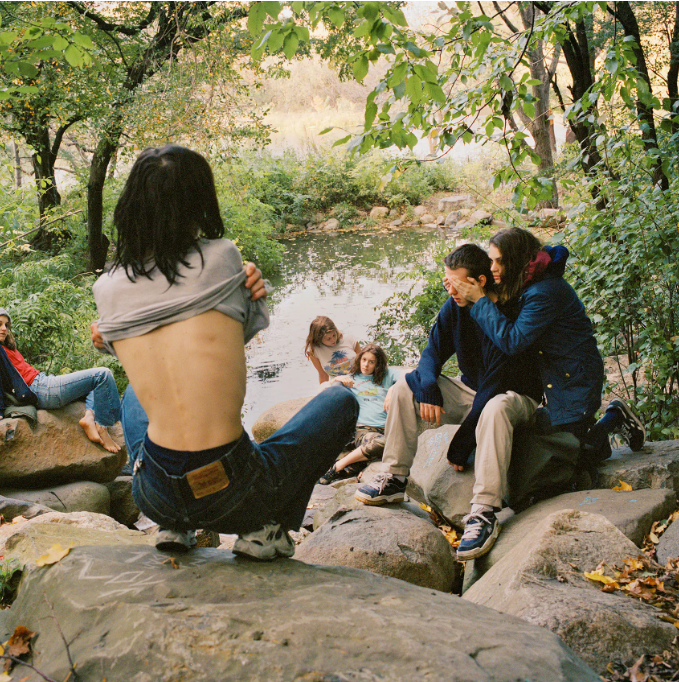
I want to take inspiration from this painting by Edouard Manet, because both Justine Kurland and Jeff Wall have taken inspiration from this painting. I also want to take inspiration from Justine Kurland’s photograph, which has taken inspiration from this painting.
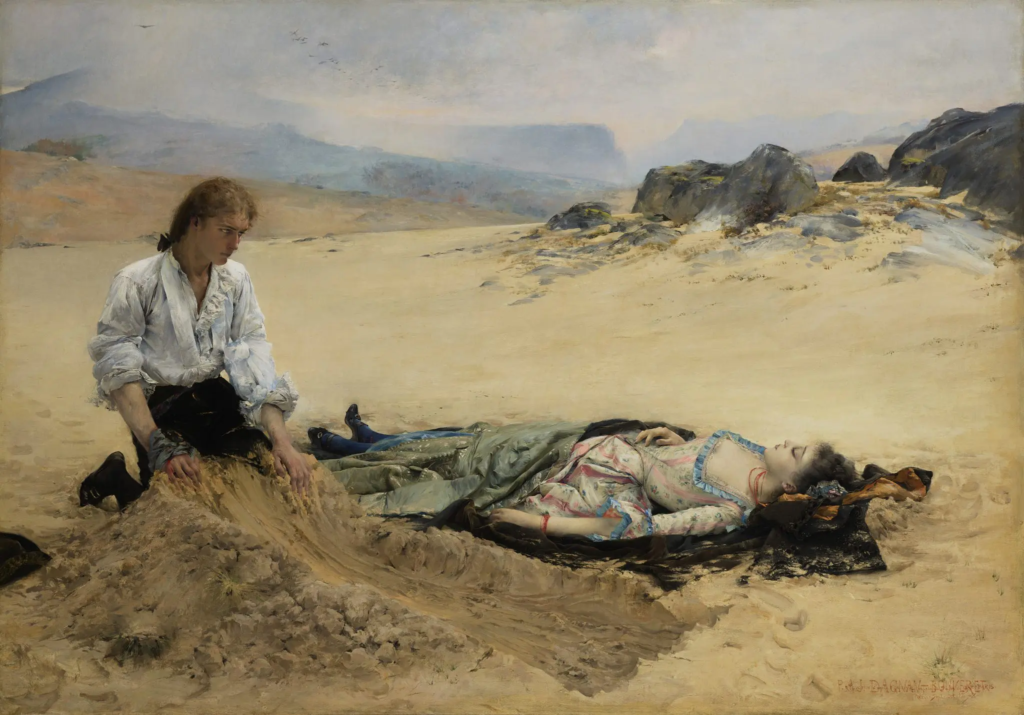
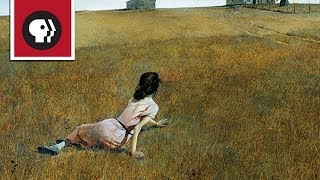
Andrew Wyeth, Christina’s world 1948.
I have chosen to recreate these famous historical paintings, because not only do they have good composition, but they also tell a story, which I feel like I would be able to present with my photographs, but make it applicable to modern day and to the theme of youth and identity, because that is what I am exploring.
